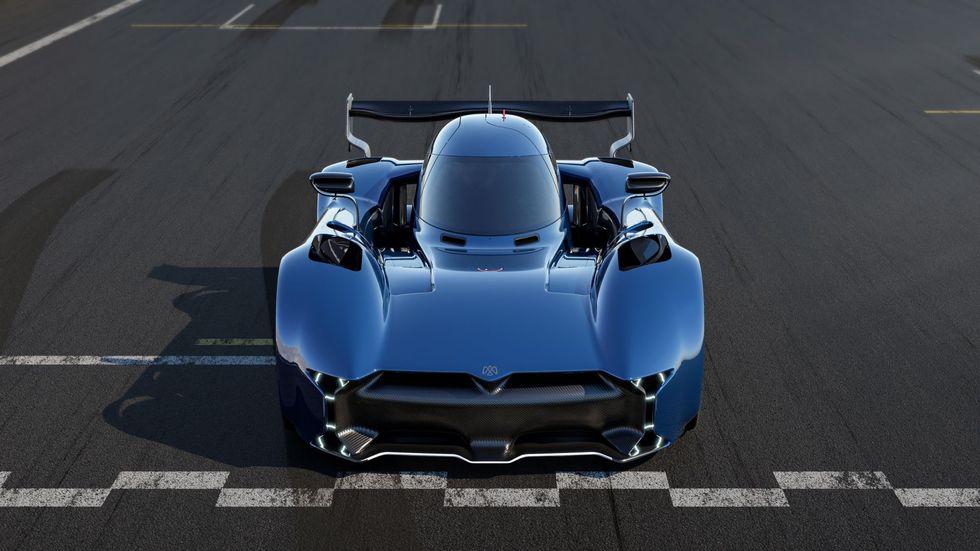- The British EV hypercar combines 1000 hp, a sub 2200-lb weight, and active aerodynamics.
- Fan-assisted aero will allow the Spéirling to create up to 3 g of cornering force.
- The Spéirling Pure will see a limited run of 100 cars, each asking for $1,050,000 at current exchange rates.
The idea of a car using fan-assisted aerodynamics is not new. But the prospect of being able to buy one yourself is. This is the McMurty Spéirling Pure, a hugely fast single-seat EV which the British company building it claims to be the first commercially available sealed skirt fan car in the world. The Pure is a track-only version, and is being offered for the equivalent of $1,050,000 at current exchange rates, but McMurty has previously promised it will ultimately produce a road-legal car as well.
The Spéirling made a splash at last year’s Goodwood Festival of Speed in England when it set the fastest ever time on the 1.17-mile hillclimb course. McMurty’s time of 39.08 seconds was nearly a second quicker than the previous benchmark set by Volkswagen’s ID.R electric record-breaker in 2019, and more than 2.5 seconds faster than the 41.6-second time that Nick Heidfeld set in a McLaren MP4-13 car in 1999—the last year when current Formula 1 cars were allowed to run timed. The Spéirling’s narrow track and short proportions—it is just 40.1-inches long—may lack classical sportscar grace, but you can’t argue against its performance.
While Gordon Murray’s T.50 hypercar also uses active fan-powered aerodynamics, that uses a different system which works to increase the efficiency of a conventional diffuser. The Spéirling extracts air from beneath its body to create a partial vacuum that will pretty much stick it to the ground—the same principle used by Jim Chaparral’s 2J racer and the Brabham BT46B Formula 1 car (also designed by Gordon Murray) that was only raced once before being voluntarily withdrawn from the sport.
The good news for anybody putting their name down for one of the limited run of 100 Spéirling Pure models is McMurty’s promise the finished car will be even quicker than the Goodwood car. Development work has continued apace and the Spéirling has a lighter battery, sits on fatter slick tires, and has a top speed that the company says has been increased to 190 mph. It is powered by a 60-kWh battery pack driving a pair of rear-mounted motors. Peak output is claimed to be 1000 hp, and the total weight is under 2200 pounds thanks to the use of a motorsport grade carbon-fiber monocoque.
While the power and weight figures are impressively potent even by hypercar standards, it is the Spéirling’s ability to generate high g-loadings even when travelling at low speeds that will set it apart. The high-speed fan gives the ability for the car to launch from a standstill while generating its peak downforce meaning, as the company says, it would be possible to pull the maximum lateral acceleration even when negotiating hairpin bends.
Faster EVs are better at brief hits of ultra high performance than sustained speed, although McMurty says that the Spéirling Pure is designed for rapid recharging. The company says it will be able to do a 10-lap stint of the 1.6-mile Silverstone National Circuit at “lap record pace,” and then recharging in just 20 minutes before running again.
The Spéirling Pure will be officially unveiled at this year’s Goodwood Festival of Speed next month. Deliveries will begin in 2025, and it seems likely that lap records will start to tumble soon after.
European Editor
Mike Duff has been writing about the auto industry for two decades and calls the UK home, although he normally lives life on the road. He loves old cars and adventure in unlikely places, with career highlights including driving to Chernobyl in a Lada.
Read the full article here




